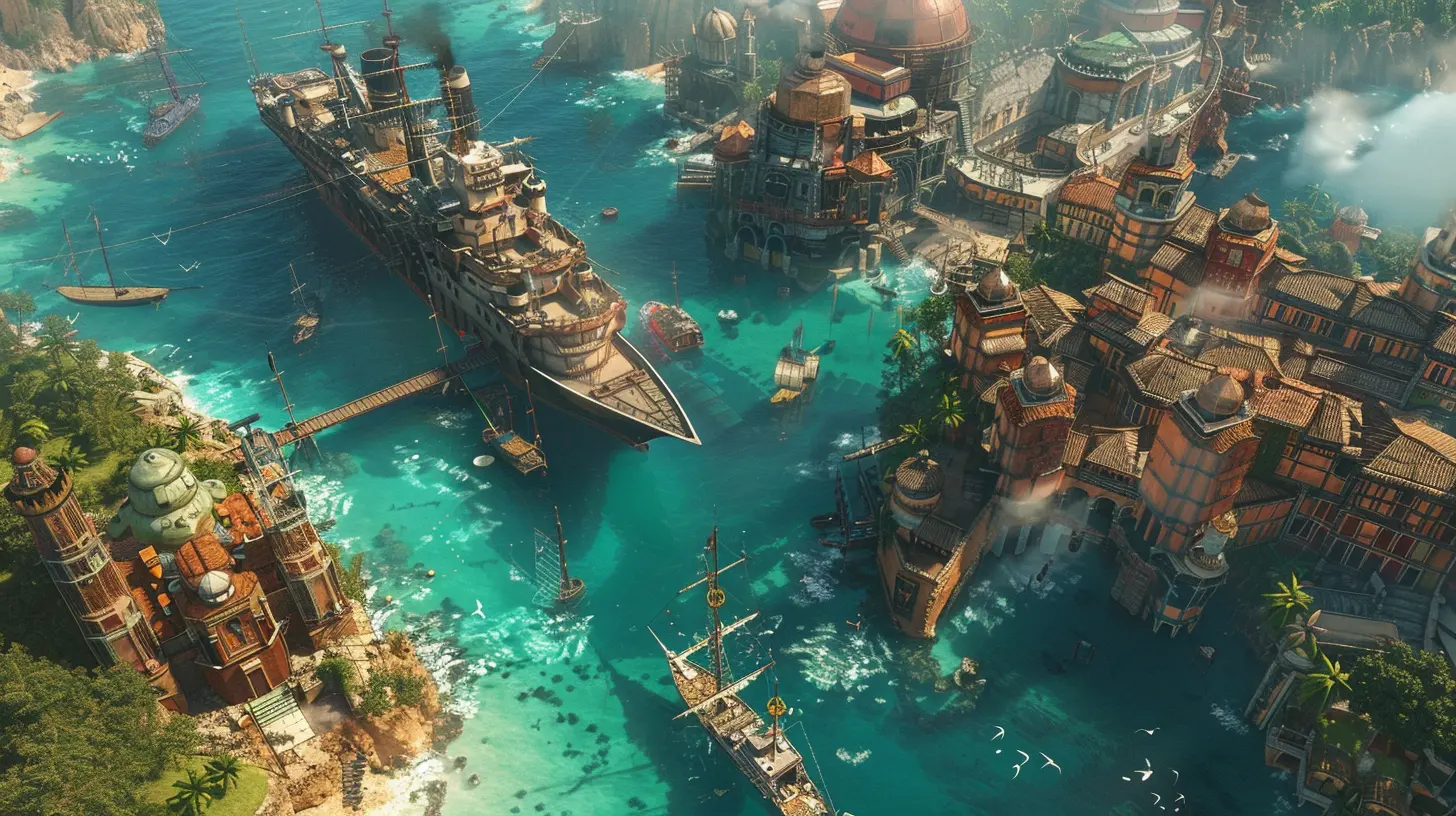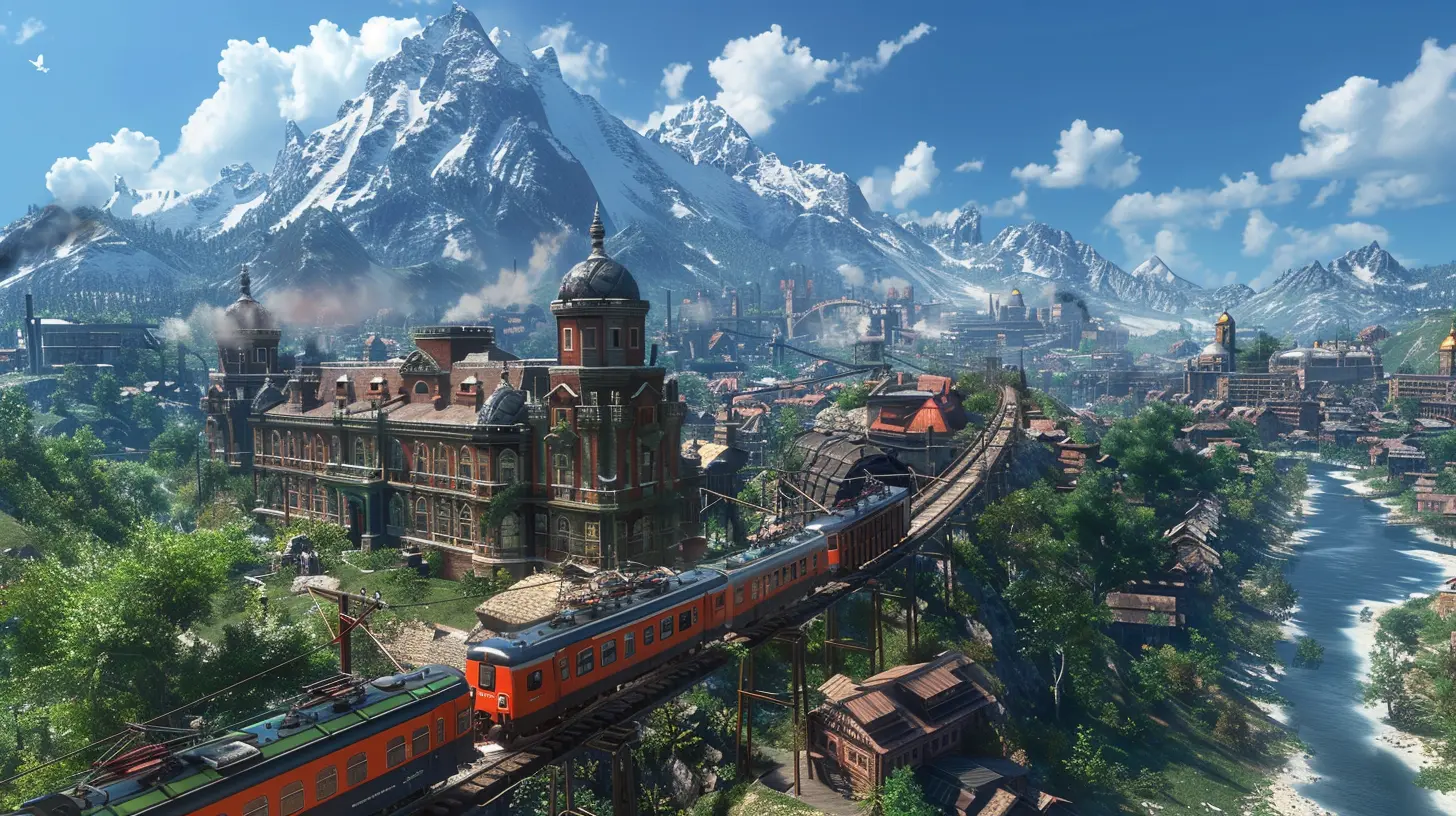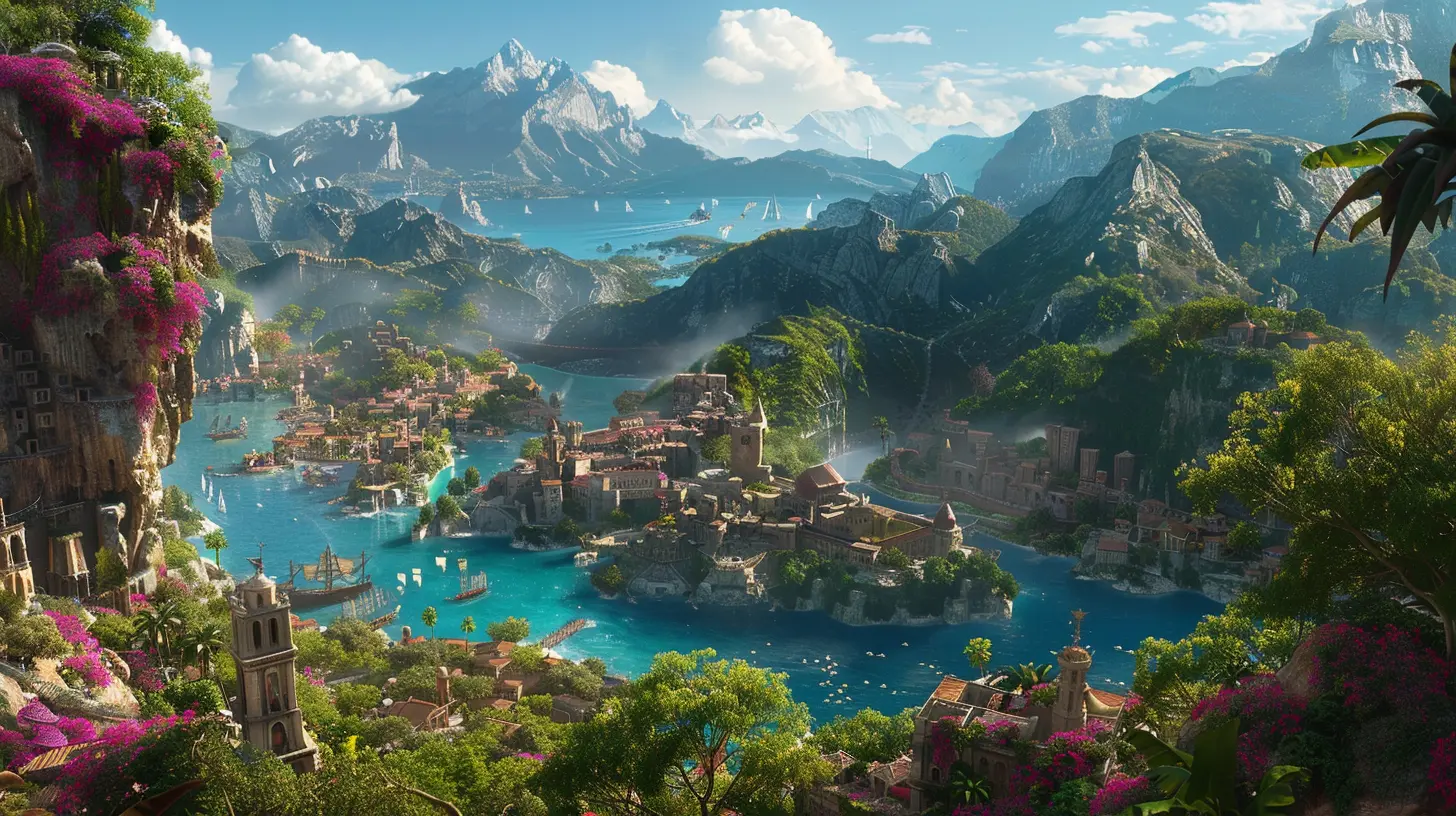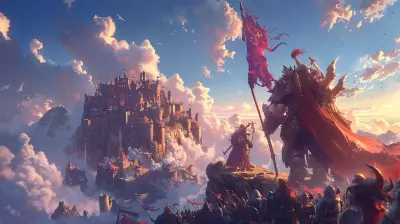Travel and Transportation Systems in Open-World Games
26 August 2025
Open-world games are like a buffet—so much to choose from, and you can’t help but go back for seconds. But let’s face it, these massive game worlds would be impossible to love without some great travel and transportation systems in place. After all, who’s got the patience to trek across a sprawling map on foot every time? A good system for getting around isn’t just a convenience; it’s a necessity for keeping the game engaging—I mean, who wants a chore simulator? Let's dive into how open-world games have mastered the art of travel and transport, making it thrilling, immersive, and, yes, sometimes downright bonkers.
Why Travel Matters in Open-World Games
When you think about open-world games like The Legend of Zelda: Breath of the Wild or Cyberpunk 2077, the thing that likely draws you in is the sheer size and richness of their worlds. But imagine if you had to walk through those massive spaces with no help. Sounds miserable, right? Travel systems do more than just help you get from Point A to Point B—they keep the pacing tight, make exploration feel rewarding, and, in the best cases, add a whole new layer of gameplay.Good travel mechanics in open-world games make you think less about the distance and more about the journey itself. Whether you’re soaring through the skies on a mythical beast or barreling down a neon-soaked highway in a futuristic car, the way you move around should feel just as exciting as the world itself. 
Types of Travel Systems in Open-World Games
Developers are pretty creative when it comes to putting wheels (or wings!) under you. Let’s break these down into some of the most popular types of travel systems you’ll find in open-world games.1. Fast Travel - The Teleporter of Convenience
First up, let’s talk fast travel. What’s better than zipping across the map in seconds? Open-world games often include fast travel to save players from spending hours trudging through already explored areas. Systems like the bonfires in Dark Souls or the Shrines in Breath of the Wild offer a quick way to revisit familiar locations.But there’s a catch—it can break immersion. Sure, clicking on a map to teleport is practical, but it can feel like cheating if the game’s world is designed to be traversed organically. That’s why many games strike a balance, like The Witcher 3, where you can fast-travel, but only from specific signposts. It’s a little thing, but it keeps the world feeling alive.
2. Mounts - Because Walking is For Losers
If fast travel is the shortcut, mounts are the MVP of open-world games. Horses, motorcycles, dragons, even giant goats—all of these have appeared in one way or another. Riding adds a layer of immersion to travel and often gives you the chance to take in the scenery at a more leisurely pace.Take Red Dead Redemption 2, for example. Riding your horse across fields and mountains is pure joy because of how realistic and detailed the world feels. On the flip side, games like World of Warcraft have turned mounts into a form of expression—who doesn’t want to roll up into town riding a giant flaming phoenix?
3. Vehicles - The Speed Demons
If you’ve ever flown a plane in GTA V or zipped through the streets of Night City in Cyberpunk 2077, you know how exhilarating vehicle-based travel can be. Cars, bikes, boats—they bring speed and adrenaline to the table. Add the right physics engine, and suddenly, every joyride becomes a mini-game of its own.Vehicles aren’t just about speed, though. They’re about style. Think about the Batmobile in Batman: Arkham Knight—not only is it a ride, but it’s also a weapon, a puzzle-solver, and an absolute power trip. When done right, vehicles aren’t just transportation—they’re part of your character’s personality.
4. Gliding and Flying - Defying Gravity
Why stick to the ground when you can take to the skies? Gliders, wingsuits, and straight-up flying are some of the most fun ways to traverse open worlds. Remember the paraglider in Breath of the Wild? It turned mountains into launchpads and made every hill feel like an opportunity.Flying, on the other hand, is more common in games like Just Cause 4, where grappling hooks and wingsuits turn you into a one-man stunt show. Flying makes you feel like you’re above it all—literally—and opens up exploration in ways ground-based travel never could.
5. Public Transport and Systems - Keeping It Relatable
Sometimes, games keep it real by introducing public transportation systems. You see this in games like Cyberpunk 2077 with its subway system or Spider-Man on PS4, where you can awkwardly ride the subway in full Spidey costume.This type of travel feels practical and immersive, especially when the game wants to reflect a bustling urban environment. It’s not the flashiest option, but hey—it’s relatable. 
Balancing Realism and Fun: The Developer’s Challenge
Creating travel systems isn’t as simple as tossing in a few vehicles and calling it a day. Developers have to strike a fine balance between realism and gameplay. For instance, you don’t want travel to feel so realistic that it becomes boring (cough Microsoft Flight Simulator for casual gamers). But you also don’t want it to feel so arcadey that it breaks the immersion.Games like Death Stranding went full tilt into realism, asking players to manage every aspect of hiking across a large, desolate world. While it wasn’t everyone’s cup of tea, for those who embraced it, walking itself became a complex, rewarding aspect of the game.
On the other hand, Assassin’s Creed Odyssey simplifies things by letting you command a ship or ride a horse without worrying too much about physics. Both approaches work, depending on the audience and purpose of the game. 
When Travel Becomes the Game
Every so often, a game comes along where the travel systems are practically the main event. Take No Man’s Sky, for instance. The whole premise revolves around space exploration—hopping from planet to planet, managing your starship, and wondering, “Where’s my next adventure?”Then there’s The Crew 2, which is almost entirely about cars, planes, and boats. The game’s map is a compressed version of the USA, and your main objective is to conquer it… by racing through it. Games like this blur the line between transportation and gameplay, making them inseparable.
What Makes a Great Travel System?
At the end of the day, a great travel system in an open-world game isn’t just about speed or convenience. It’s about feeling connected to the world around you. It should make the game’s universe feel alive, enticing you to explore every nook and cranny.So, what’s the secret sauce?
- Immersion: Does it feel natural within the world?
- Enjoyment: Is the act of traveling fun in itself?
- Convenience: Can you skip the grind when you’re just trying to complete a quest?
Combine all of these, and you’ve got a system that doesn’t just serve the player—it enhances the experience.
Final Thoughts
Travel and transportation systems might not seem like the flashiest feature in an open-world game, but they’re the backbone of the entire experience. Whether you’re galloping across fields on a trusty steed or soaring through the skies on a dragon, the way you get around shapes how you see the game’s world. It’s not just about where you’re going—it’s about how you get there. And when a game nails that? Let’s just say you never forget the ride.all images in this post were generated using AI tools
Category:
World BuildingAuthor:

Greyson McVeigh
Discussion
rate this article
1 comments
Calaris Acevedo
This article prompts so many questions! How do different travel systems influence player exploration and immersion? What unique mechanics have the best open-world games introduced? I’m curious about how design choices shape our adventures in these expansive virtual worlds!
September 27, 2025 at 2:50 PM

Greyson McVeigh
Thank you for your interest! Different travel systems, like fast travel vs. physical exploration, significantly impact player immersion and discovery. Unique mechanics, such as dynamic weather or environmental interactions, enhance these experiences. Design choices ultimately shape how we engage with and explore these vast virtual landscapes!


